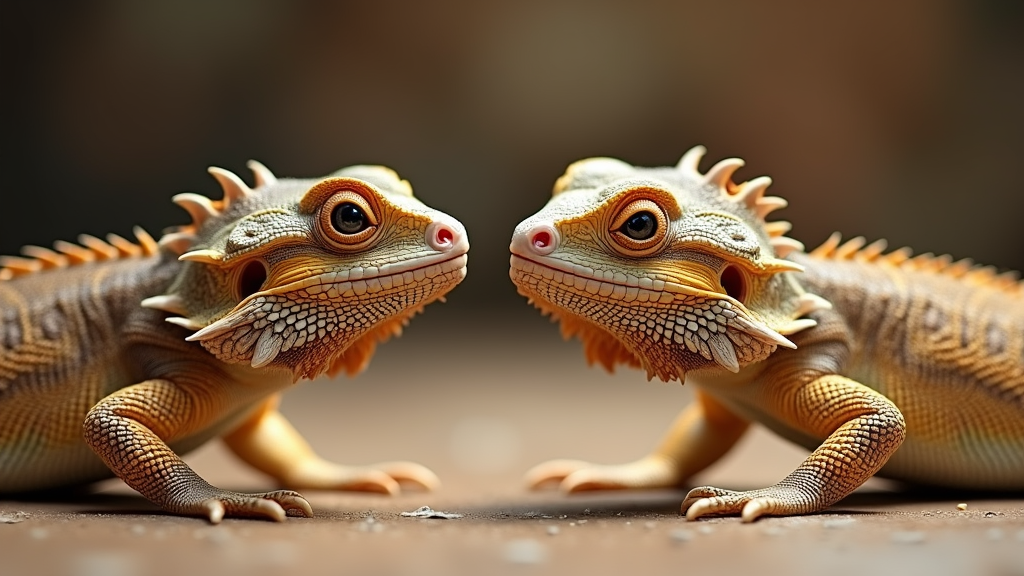Welcome to our in-depth guide on socialising bearded dragons. If you’re a proud owner of these fascinating reptiles or considering bringing one into your home, this article will provide you with everything you need to know about helping your bearded dragon feel comfortable and become a well-socialised member of your household.
Bearded dragons, often referred to simply as “beardies”, are known for their docile and friendly nature. However, like any pet, they require proper socialisation to ensure they are happy and stress-free. This guide draws from years of personal experience and expert advice to offer practical tips and insights.
Building Trust with Your Bearded Dragon
Initial Contact
When you first bring your bearded dragon home, it’s crucial to allow them some time to adjust to their new environment.
- Avoid handling: Give your beardie a few days to settle in before attempting to handle them. This allows them to acclimate to their new home without additional stress.
- Observe: Spend time around their enclosure, letting them get used to your presence. Speak softly to them to help them become familiar with your voice.
Gentle Handling Techniques
Once your bearded dragon has had time to settle, you can begin to handle them gently.
- Approach calmly: Always approach your beardie slowly and from the front to avoid startling them.
- Support their body: When picking them up, ensure you support their entire body, including their legs and tail. This makes them feel secure.
- Short sessions: Start with short handling sessions of about 5-10 minutes and gradually increase the duration as your dragon becomes more comfortable.
Promoting Positive Interactions
Creating a Routine
Bearded dragons thrive on consistency. Establishing a routine helps them know what to expect and reduces stress.
- Feeding times: Feed your beardie at the same times each day. This not only helps with their digestion but also builds trust as they associate you with a positive experience.
- Cleaning schedule: Keeping a regular cleaning schedule for their enclosure ensures a hygienic environment, which is crucial for their health and wellbeing.
Enrichment Activities
Keeping your bearded dragon entertained and mentally stimulated is key to their socialisation.
- Interactive play: Use safe toys like ping pong balls or reptile-safe climbing structures to encourage activity.
- Outside enclosure time: Under supervision, allow your bearded dragon to explore a safe, enclosed space outside of their regular habitat. This provides mental stimulation and reduces boredom.
Recognising Signs of Stress and Comfort
Identifying Stress Indicators
Bearded dragons can exhibit various signs of stress, which, if left unchecked, can affect their overall health.
- Darkening of the beard: A dark beard can indicate that your dragon is feeling threatened or stressed.
- Hiding: Frequent hiding can be a sign of discomfort or fear.
- Lack of appetite: A stressed bearded dragon may eat less or refuse food.
Creating a Comfortable Environment
Ensuring your bearded dragon feels safe and comfortable in their enclosure is pivotal.
- Temperature regulation: Make sure your bearded dragon’s habitat has appropriate temperature gradients. A basking area of 95-110°F (35-43°C) and a cooler zone around 75-85°F (24-29°C) are ideal.
- Hiding spots: Provide at least two hiding spots, one in the warm zone and one in the cooler area, to give your dragon options to retreat and feel safe.
Conclusion
Socialising your bearded dragon is a gradual process that requires patience and consistency. By building trust through gentle handling, promoting positive interactions, and ensuring a comfortable environment, you’ll foster a strong bond with your bearded dragon. Remember, every dragon is unique; some may take longer to socialise than others.
If you notice any severe behavioural changes or health concerns, don’t hesitate to consult a vet experienced with reptiles. Your dragon’s health and wellbeing are paramount.
For more tips on bearded dragon care, check out our comprehensive guide on Bearded Dragon Behavior Problems and join our community of reptile enthusiasts here.
Meta Description
Discover how to socialise your bearded dragon with our expert guide. Learn practical tips for building trust, promoting positive interactions, and recognising signs of stress to ensure a happy and well-adjusted reptile.
By following these guidelines, you’ll create a healthy and nurturing environment for your bearded dragon, ensuring a happy and well-socialised pet. Thank you for reading, and happy bonding with your beardie!

